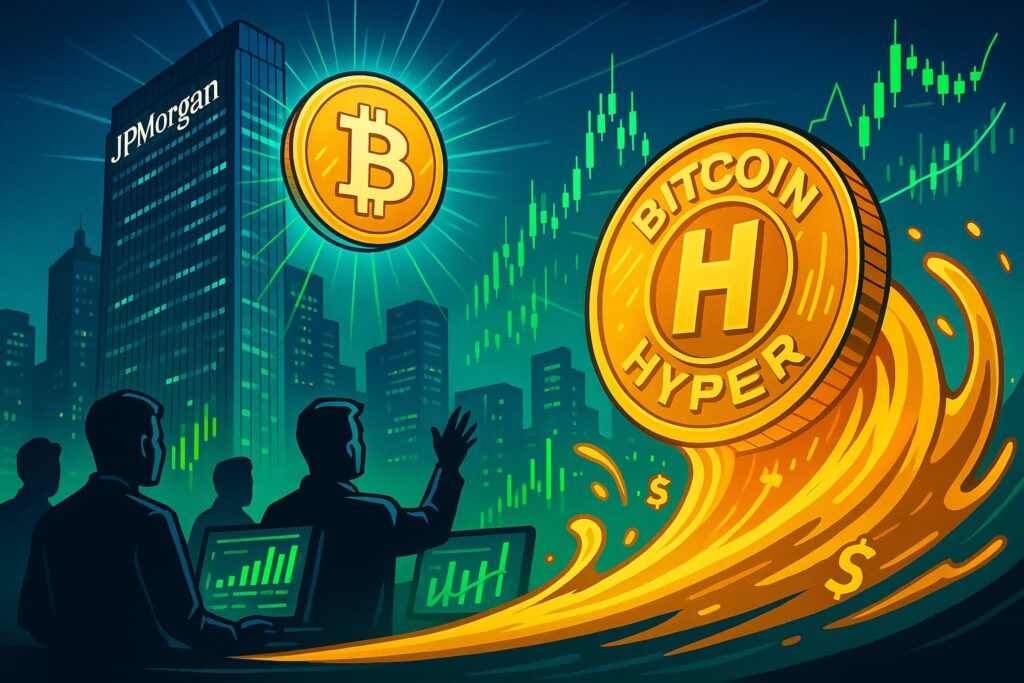The world of cryptocurrency is continuously evolving, with major financial institutions like JPMorgan venturing into this rapidly advancing domain. As the integration of blockchain technology into traditional financial systems becomes increasingly prevalent, understanding the nuances of this transformation is crucial for both investors and market enthusiasts. This comprehensive guide delves into JPMorgan’s blockchain initiatives and explores the potential of Bitcoin Hyper ($HYPER), an altcoin designed to enhance Bitcoin’s scalability.
JPMorgan’s Blockchain Ventures and the Rise of Bitcoin Hyper
As financial landscapes shift, JPMorgan Chase is making significant strides in digital assets and blockchain technology. In a recent interview, Scott Lucas, the Global Head of Markets Digital Assets at JPMorgan, outlined the bank’s future plans to allow clients to trade Bitcoin and other cryptocurrencies. While custody services are not yet available, JPMorgan is strategically positioning itself at the forefront of blockchain innovation.
JPMorgan’s Blockchain Integration
JPMorgan’s commitment to blockchain is evident in its development of the JPMD deposit token. This prototype aims to revolutionize financial transactions by enabling real-time, 24/7 cross-border settlements. The token serves as on-chain collateral, seamlessly integrating with existing deposit systems. With these initiatives, JPMorgan is set to bridge the gap between traditional finance and the burgeoning blockchain ecosystem.
Bitcoin Hyper ($HYPER): Elevating Bitcoin’s Capabilities
Bitcoin, despite its pioneering role in the crypto world, is hindered by slow transaction speeds and high costs. Bitcoin Hyper ($HYPER) addresses these challenges through its advanced Layer 2 network, offering rapid and scalable solutions. By incorporating the Solana Virtual Machine (SVM), it significantly reduces transaction times and fees.
The Canonical Bridge technology further enhances Bitcoin Hyper’s functionality, allowing users to deposit BTC and mint wrapped BTC on the L2 network. This setup facilitates seamless interaction with decentralized applications (dApps), offering minimal latency and low transaction fees. The native token, $HYPER, plays a vital role as a transaction medium, staking asset, governance tool, and more.
Investment Potential of Bitcoin Hyper
Bitcoin Hyper’s presale trajectory underscores its market appeal, boasting a remarkable $23.5 million raised. Currently priced at $0.013115, the token offers lucrative staking rewards at 50%. Projections suggest that $HYPER could soar to $0.20 by 2026, marking a potential 1,425% return from today’s price. This growth potential, coupled with the L2’s ability to support dApps and smart contracts, positions Bitcoin Hyper as a promising investment.
Is Fantom (FTM) a good long-term investment?
Fantom (FTM) has attracted interest due to its scalable architecture and competitive transaction fees. As with any investment, thorough research into market trends, project developments, and the broader crypto ecosystem is essential before investing.
How does JPMorgan’s JPMD token function?
JPMorgan’s JPMD token is designed as a digital asset for enabling instantaneous, cross-border financial transactions. The token operates around the clock, serving as on-chain collateral and integrating smoothly with existing financial infrastructures.
What makes Bitcoin Hyper ($HYPER) unique?
Bitcoin Hyper ($HYPER) distinguishes itself through its Solana Virtual Machine integration, which drastically enhances transaction speeds and affordability. Its network supports dApps and smart contracts, making it a versatile solution for expanding Bitcoin’s utility.
In summary, this well-rounded analysis not only examines the innovative strategies of JPMorgan in the blockchain sector but also highlights the transformative potential of Bitcoin Hyper. By marrying traditional financial systems with cutting-edge technology, these initiatives offer substantial opportunities for investors and reflect the dynamic evolution of the financial landscape.

